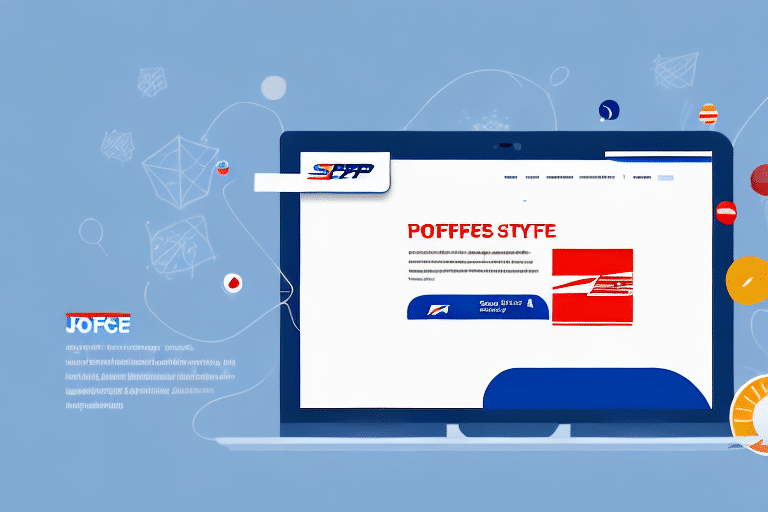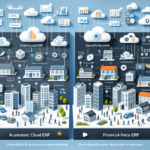Why Integrating USPS with SAP Business One is Important for Businesses
In the rapidly expanding landscape of e-commerce, efficient shipping processes are crucial for business success. The United States Postal Service (USPS) remains a preferred choice for many due to its extensive range of shipping options and competitive pricing. Integrating USPS with SAP Business One, a comprehensive enterprise resource planning (ERP) system, can significantly enhance shipping operations' efficiency, enabling businesses to maintain a competitive edge.
Steps to Connect USPS with SAP Business One
1. Obtain USPS Web Tools Credentials
Begin by registering for USPS Web Tools to receive your user ID and password. These credentials are essential for accessing USPS's API services.
2. Configure USPS in SAP Business One
Within SAP Business One, navigate to the integration settings and enter your USPS Web Tools credentials. This configuration allows seamless access to USPS's shipping, tracking, and rating services directly from the ERP system.
3. Utilize USPS Services in SAP Business One
After configuration, users can create shipping labels, track packages, and manage rates without leaving the SAP Business One interface. This integration minimizes manual data entry, reducing errors and saving valuable time.
Key Benefits of USPS Integration with SAP Business One
- Real-Time Access: Gain immediate access to USPS's comprehensive shipping services, rates, and tracking features.
- Cost Efficiency: Reduce labor costs by eliminating the need to switch between multiple software systems.
- Data Accuracy: Enhance data integrity by directly entering information into SAP Business One.
- Customer Satisfaction: Improve customer experience with real-time tracking and timely deliveries.
Additionally, the integration streamlines the entire shipping process, including label creation, package tracking, and return management, all within SAP Business One. This holistic approach not only saves time but also ensures accurate inventory management by tracking shipments and stock levels in real-time.
How to Optimize Your USPS and SAP Business One Integration for Maximum Efficiency
Automate Data Flow
Ensure that shipping information flows seamlessly into SAP Business One without manual intervention by automating data entry processes. Clear and accurate labeling further minimizes errors and saves time.
Regular Data Analysis
Periodically review and analyze shipping data to identify bottlenecks or inefficiencies. Utilizing SAP Business One's reporting tools can help make informed adjustments to enhance overall performance.
Stay Updated
Keep abreast of updates or changes in both USPS and SAP Business One systems. Regularly updating the integration settings ensures compatibility and leverages new features for improved efficiency.
Top USPS Shipping Options for SAP Business One Users
- Priority Mail: Delivers within 1-3 business days, offering a balance between speed and cost.
- Priority Mail Express: Guarantees overnight delivery to most locations, suitable for urgent shipments.
- First-Class Mail: An economical choice for small packages under 13 ounces.
- Media Mail: Ideal for educational materials, books, and DVDs with specialized rates.
- Parcel Select Ground: A cost-effective option for larger packages, with delivery times ranging from 2-8 business days.
For international shipping, USPS offers services such as Priority Mail International, Priority Mail Express International, and First-Class Package International Service, enabling businesses to reach customers globally with varying delivery speeds and tracking capabilities.
Tips for Managing Your USPS and SAP Business One Integration Effectively
- Accurate Data Entry: Ensure all shipping details, including weight and dimensions, are correctly entered to prevent errors.
- Regular Rate Checks: Monitor USPS shipping rates to ensure cost-effectiveness.
- Trend Monitoring: Analyze shipping trends to adjust shipping options as needed.
- Employee Training: Provide comprehensive training to staff to utilize the integration effectively.
Additionally, staying compliant with the latest shipping regulations by regularly updating the system is essential. Designating a dedicated team member to oversee the integration can further streamline operations and promptly address any issues.
Common Challenges Businesses Face When Integrating USPS with SAP Business One
- Initial Setup: Ensuring the correct configuration for seamless integration can be complex.
- Managing Multiple Shipments: Keeping track of numerous shipments in real-time requires robust system capabilities.
- Employee Training: Adequate training is necessary to minimize user errors.
- Staying Updated: Adapting to USPS's policy and rate changes is vital for maintaining seamless operations.
Customization may also be required to meet specific business needs, such as creating tailored reports or integrating additional functionalities. Collaborating with IT professionals or trusted vendors can ensure the integration aligns with your business objectives.
How to Troubleshoot Issues with Your USPS and SAP Business One Integration
When encountering issues with the USPS and SAP Business One integration, businesses should:
- Consult the SAP Support and USPS Help resources for guidance on configuration and error resolution.
- Ensure that both systems are updated to the latest versions to prevent compatibility issues.
- Implement regular software updates to address technical glitches and improve system stability.
Best Practices for Maintaining Your USPS and SAP Business One Integration
To ensure the USPS and SAP Business One integration remains effective:
- Regularly monitor integration performance and shipment statuses.
- Update the system promptly with any USPS rate or policy changes.
- Conduct periodic training sessions to keep employees informed about new features and best practices.
- Develop a backup plan, such as a secondary integration system or manual processes, to handle potential system failures.
- Continuously review and adjust integration settings to align with evolving business needs.
How to Customize Your USPS Settings in SAP Business One
SAP Business One offers various customization options to tailor USPS settings according to business requirements:
- Predefined Shipping Options: Set preferred shipping methods to streamline the order fulfillment process.
- Package Specifications: Define standard package dimensions and weights to reduce manual entry errors.
- Custom Reports: Create and customize shipping reports to gain insights into shipping performance and costs.
- Real-Time Tracking: Enable real-time tracking to monitor shipment statuses and provide customers with accurate delivery information.
Frequently Asked Questions About Integrating USPS with SAP Business One
How long does it take to integrate USPS with SAP Business One?
The integration process is typically straightforward and can be completed within a few hours, depending on the complexity of your shipping requirements and system configurations.
Can I use USPS's shipping options without integrating them with SAP Business One?
Yes, businesses can utilize USPS’s standalone website or separate software to access shipping options. However, integrating with SAP Business One offers enhanced efficiency and streamlined operations.
What are the costs associated with integrating USPS with SAP Business One?
While there are no additional costs for the integration itself, businesses are responsible for USPS's shipping service charges based on their usage and selected shipping options.
Real-Life Examples of Successful USPS and SAP Business One Integrations
Numerous businesses have successfully integrated USPS with SAP Business One, leading to enhanced shipping processes and operational efficiency. For instance, a medical equipment supplier struggled with managing numerous shipments and frequent errors. After implementing the integration, the supplier streamlined their shipping operations, significantly reduced errors, and provided real-time tracking updates to customers, resulting in higher customer satisfaction and operational efficiency.
The Future of USPS and SAP Business One Integration: Trends to Watch Out For
The integration between USPS and SAP Business One is poised for further advancements in the coming years. Key trends include:
- Renewable Energy Integration: USPS is increasingly adopting renewable energy sources like solar and wind to power their facilities, aligning with sustainability goals.
- Artificial Intelligence and Machine Learning: Incorporating AI and ML into SAP Business One can offer predictive analytics, optimizing shipping routes and improving delivery times.
- Enhanced Automation: Increased automation in data processing and shipment management will further reduce manual intervention and errors.
Staying informed about these trends will help businesses leverage new technologies to enhance their shipping operations continually.
In conclusion, integrating USPS with SAP Business One offers substantial benefits by enhancing shipping efficiency and accuracy. By adhering to best practices and leveraging the integration’s full capabilities, businesses can optimize their shipping operations and achieve greater operational success.






















